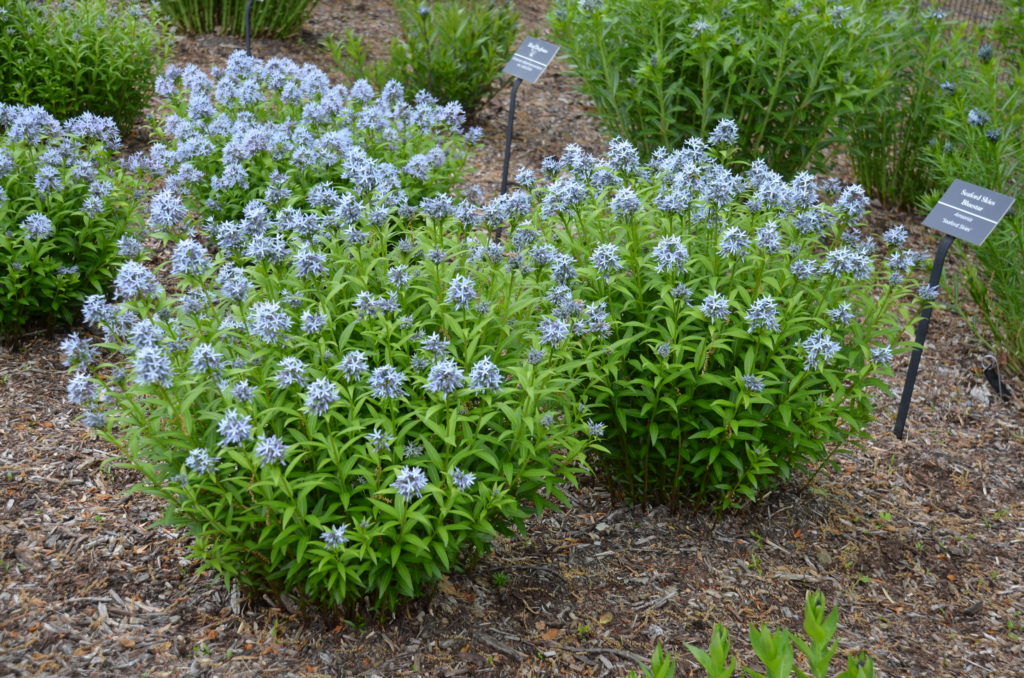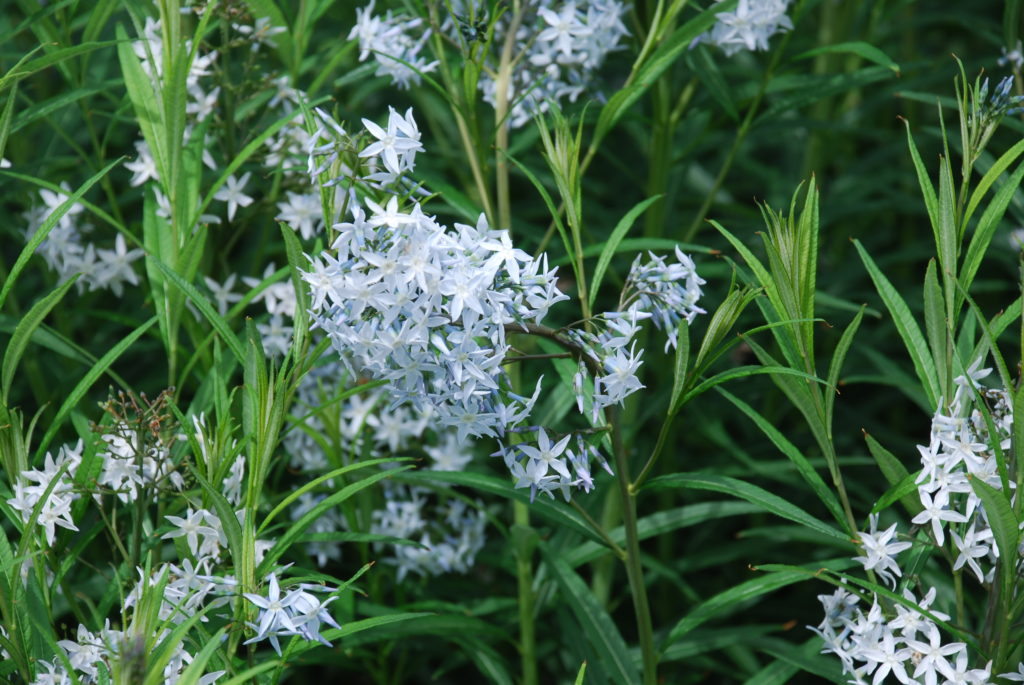Eastern Bluestar (Amsonia tabernaemontana), aka blue dogbane, is a native herbaceous perennial that is becoming more popular with U.S. gardeners (USDA hardiness zones 3-9).

This erect, clump-forming plant produces terminal, pyramidal clusters of ¾ inch, soft light blue, star-like flowers in mid- to late-spring atop erect
2-3 feet tall leafy stems. Narrow, willow-shaped, dull green foliage may turn an attractive yellow in fall. The plant can be cut close to the ground or left for winter interest.
Eastern bluestar grows best in full sun. A plant in part shade will likely need to be staked due to its weak floppy form. Cut back stems after flowering to create a round, neater appearance. This species is less drought tolerant than A. hubrichtii.
Hummingbirds, large carpenter bees, hummingbird moths and butterflies visit the flowers in mid-spring. Generally, deer do not trouble Eastern bluestar. The latex sap is mildly irritating to humans. The plant appears to be unappealing to rabbits, deer, insects, slugs, and most other garden pests.

Cultivars of Eastern Bluestar:
‘Blue Ice’ looks very similar in appearance to the species except grows much more compact (1.5 feet tall and wide. Spring flowers are dark lavender-blue.
‘Short Stack’ is a dwarf cultivar that grows to only 10-12 inches tall and 18 inches wide with sky-blue flowers. Foliage may be susceptible to rust.
‘Storm Cloud’ start out with near-black stems and silver-veined dark green leaves in spring which lighten to olive green by early summer. Light pale blue flowers bloom from late spring to early summer, and may rebloom. It may be subject to rust.
‘Seaford Skies’ is a hybrid cross (A. hubrectii x A. tabernaemontana) discovered growing in Seaford, Virginia. Plants average 2-4 feet tall and 2-3 feet wide. Sky blue flowers develop atop 36 inch erect stems may attain 5 feet.
Willow leaf bluestar (var. salicifolia) also called bluestar, is native to the southeastern U.S., is often overlooked by gardeners. Plants average 3 feet in height and spread with dark green, narrow and willow-like leaves that turn clear yellow shade in autumn. Star-shaped flowers are pale lavender blue.

 Posted in
Posted in 
